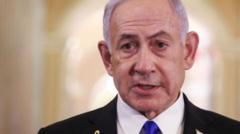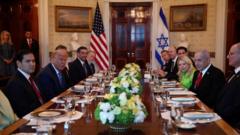A preliminary U.S. report suggests that airstrikes on Iran's nuclear sites achieved limited results. Meanwhile, conflicting narratives emerge from both nations as they navigate a fragile ceasefire.
U.S. Strikes on Iran: Analysis of Impact and Current Ceasefire Dynamics

U.S. Strikes on Iran: Analysis of Impact and Current Ceasefire Dynamics
A detailed examination of recent U.S. airstrikes on Iranian nuclear facilities reveals discrepancies in reported effectiveness amidst ongoing tensions between Iran and Israel.
A recently released classified U.S. assessment has disclosed new insights into the recent airstrikes on Iran's nuclear facilities, which were executed amid a complex backdrop of geopolitical tensions. The report indicates that the strikes, aimed at three key nuclear sites, have delayed Iran's nuclear capabilities by only a few months. This assessment comes as a ceasefire between Iran and Israel appears to be holding steady following a brief but intense conflict.
According to sources familiar with the report, while the airstrikes effectively sealed off access to two of Iran's facilities, they did not compromise the structural integrity of the underground facilities. This finding challenges U.S. President Trump's earlier claims that the strikes had entirely dismantled Iran's nuclear capabilities, with a White House spokesperson labeling the initial assessment as “flat-out wrong.”
As the ceasefire progresses, details remain murky. In a statement made to the Iranian public, President Ebrahim Raisi declared the end of what he described as “a 12-day war that was imposed on the Iranian people,” reflecting a sense of relief following the hostilities. On the military front, Israel’s defense forces have eased emergency restrictions that were previously put in place during this period of conflict.
Both Iran and Israel engaged in retaliatory airstrikes overnight on Monday, with each side presenting contrasting narratives about ongoing provocations. Following the attacks, President Trump expressed frustration with both nations for continuing military actions after he had announced an end to hostilities. However, he quickly pivoted, taking credit for having orchestrated a ceasefire and the alleged “destruction” of Iranian nuclear facilities via a post made on Truth Social, stating his "great honor" in bringing an end to the conflict.
These developments illustrate a significantly complex scenario where military actions, diplomatic narratives, and conflicting claims intertwine, underscoring the delicate balance of power in the region and the repercussions it may have globally.




















